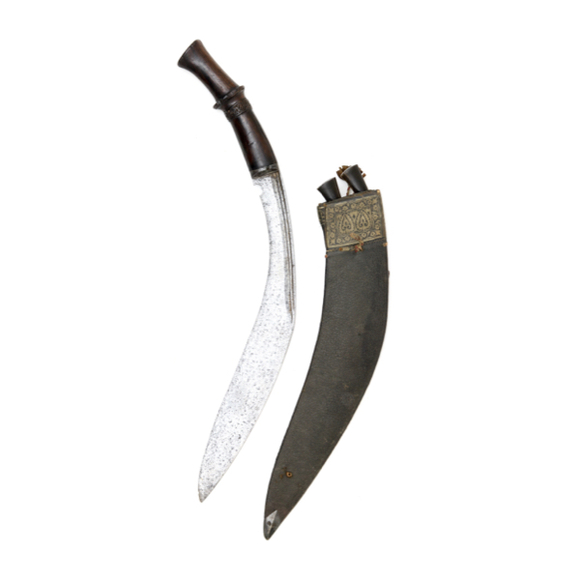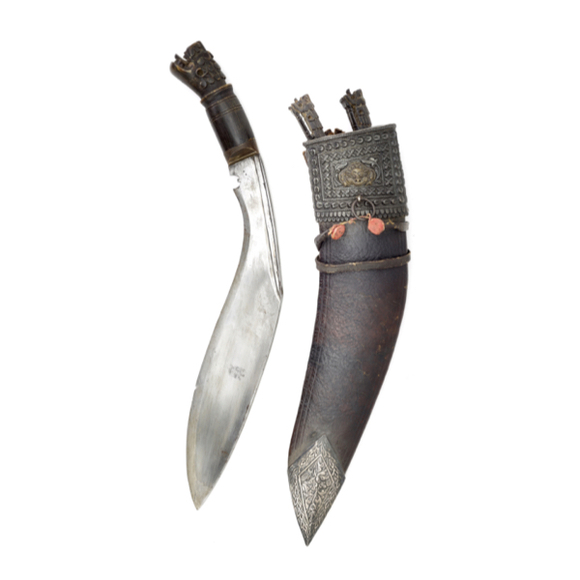With a golden damascened lock of the Indo-Portuguese type.

126.5 cm / 49.8 inch
100.5 cm / 39.6 inch
15 mm / .59 inch
2046 grams
18th century, Cochinchina.
(Southern Vietnam.)
Ironwood, steel, iron, silver, bone, elephant ivory, tortoise shell.
Introduction
The Vietnamese matchlock musket is called called súng hỏa mai. The lock of Indo-Portuguese type which operates with a springed serpentine that snaps down at the pull of the trigger. Typical for south Vietnam are the short, slightly downward curving butt ends usually plated with bone, or in this case ivory. They are meant to be held against the cheek instead of the shoulder. Recoil on old black powder was not as severe as on modern gunpowder, so the arms sufficed to absorb the recoil.
Description
A very fine example of a Vietnamese matchlock musket, or súng hỏa mai with good quality smoothbore iron barrel of octagonal cross-section. The steel has a nice black patina. It is mounted on a dark ironwood stock, held by nine silver bands. Buttplate and underplate of old, deeply patinated elephant ivory. Plate on top of bone or stag antler, once broken and repaired.
The most striking and unusual feature of the musket is ia beautiful all-silver lock, where all others come with brass locks. It has a silver lock plate, silver trigger guard, a silver underplate and even a silver serpentine. All parts executed with typical Vietnamese designs, the top of the serpentine top crafted like a monster's head. The ribbed trigger guard is very nicely crafted. Vietnamese matchlocks with silver locks are extremely rare, this being the only known example to me and my colleagues.
According to the acclaimed 18th-century Vietnamese philosopher, poet, encyclopedist, and government official Lê Qúy Đôn, these were made in Cochinchina. He states in his 1776 account on local gun-making in the area:
"...the gun's nails are forged by blacksmiths, triggers and locks crafted by silversmiths... ...the stock carved by carpenters, the military's responsibility is making the barrels."1
This is a significant reference, as it gives us a specific time and place for the manufacture of these rare guns with silver locks: Cochinchina, second half of the 18th century. This matches the overall style and appearance of the piece, which we already established at southern Vietnam, 18th century.
Condition
Barrel in fine patinated condition, no active rust or pitting. All losses and damage clearly shown in the pictures. Pan cover missing. Muzzle lost a small portion at the front, probably holding a front sight at some point. Comes with its original ramrod, although the rod has lost some of its length. Some repairs to the lock. Wooden stock in good condition, with a nice dark patina. The lock is fully functional. Overall in very fine condition for its age.
Conclusion
Vietnamese matchlocks in any condition are quite rare. This piece represents a very rare variation of an already rare type of Asian matchlock. As an extra bonus, we know from Lê Qúy Đôn's account that such guns were made in Cochinchina in the second half of the 18th century. The absence of any other known examples, nor references to, Vietnamese matchlocks with all-silver locks seems to suggest the practice was never widespread and may have been limited to that specific time and place. A fine and rare piece.
We know that these are expensive to ship, so the price is including international shipping, on the house.
(Assuming that the item can legally shipped into your country.)
NOTES
1. Lê Qúy Đôn, Phủ Biên Tạp Lục (撫邊雜錄 or "Miscellaneous Chronicles of the Pacified Frontier"), page 418. Thanks to Dong Nguyen for bringing this reference to my attention and kindly translating it for me. He runs the blog: Đại Việt Cổ Phong about Vietnamese history and traditional culture.
CITES
To meet the demands of the Convention International Trade of Endangered Species (CITES), this object is sold with an appraisal document from a certified Dutch appraiser of the TMV Federation. Among others, it states that: The item is manufactured in the 18th century. The stock is of casuarina equisetifolia wood (non CITES listed) and has buttplates of elephant ivory of the species elephas maximus (CITES appendix II).
The item is within article 2 of council regulation EC NO338/97 and within Convention of International Trade of Endangered Species (CITES): The materials were removed from the wild and significantly altered from their natural state well before the date of convention: June 1st, 1947. It can be freely traded within the EU without a permit, and is eligible for CITES export permit for trade outside of the EU.*
*Buyers outside of Europe: Beware that it may not be possible to export the item to your country due to restrictions on international ivory trade. CITES sets the minimal restrictions, countries and states under the convention often maintain further restrictions on top of CITES.






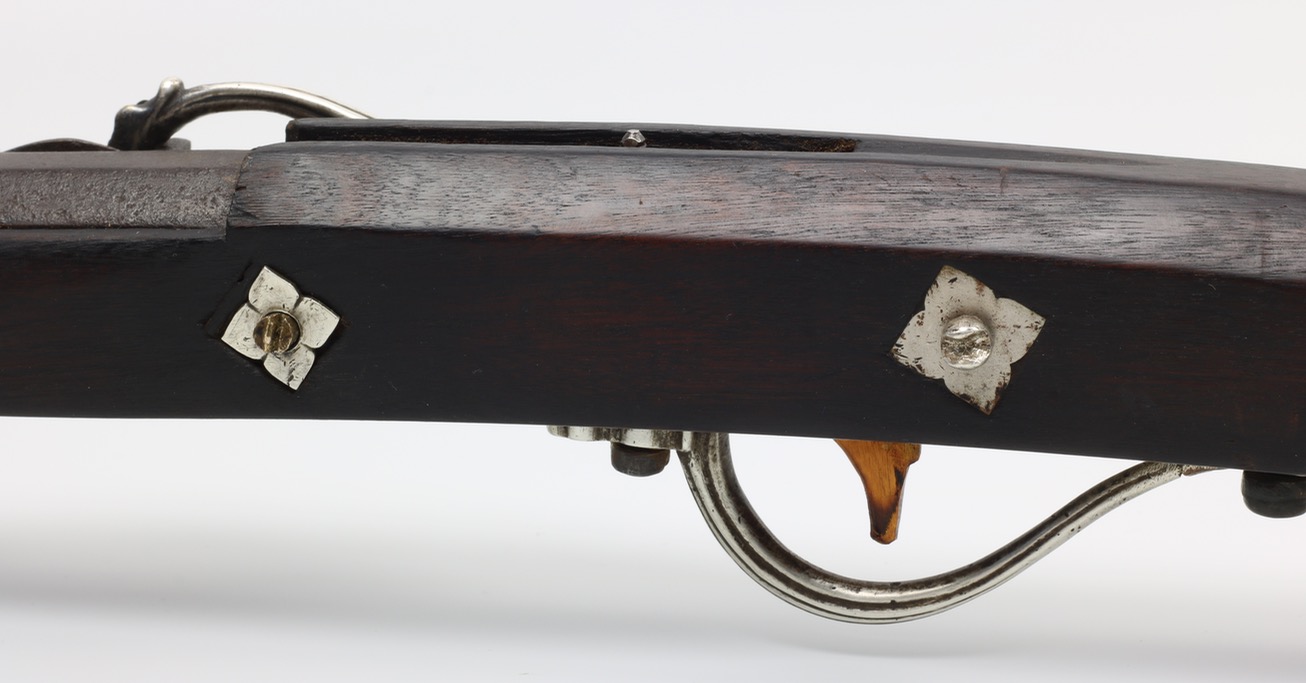

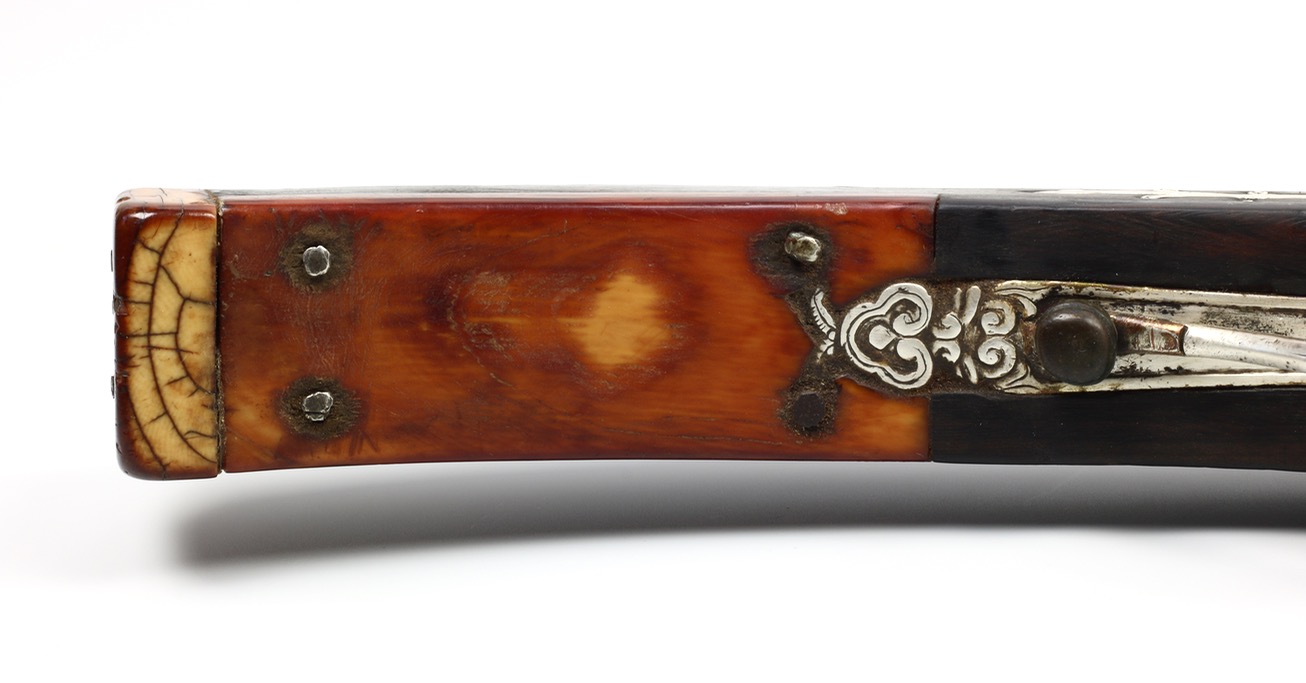

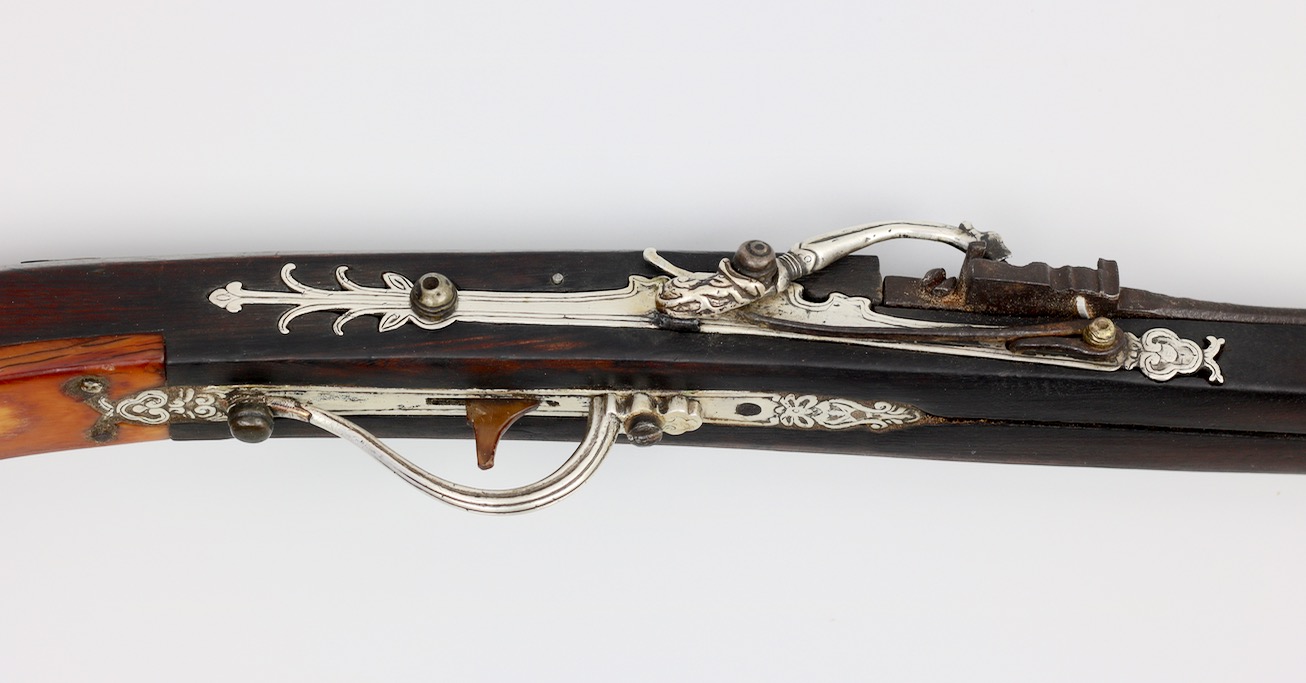
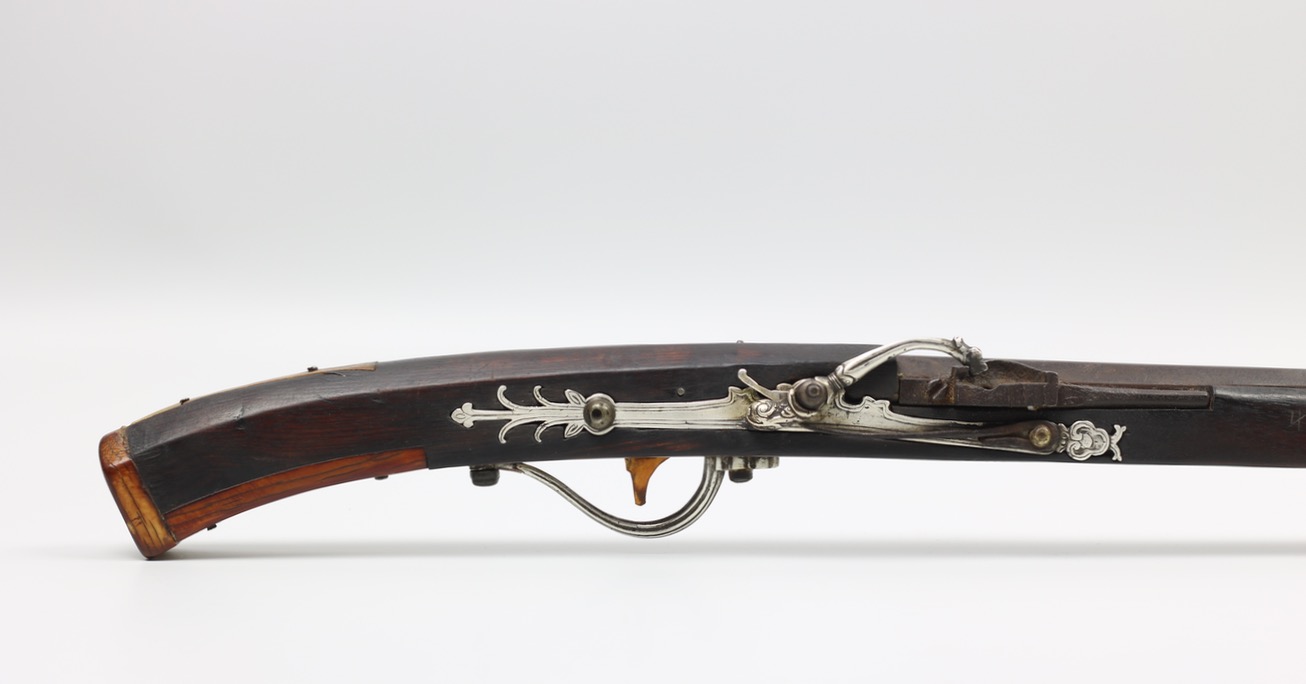


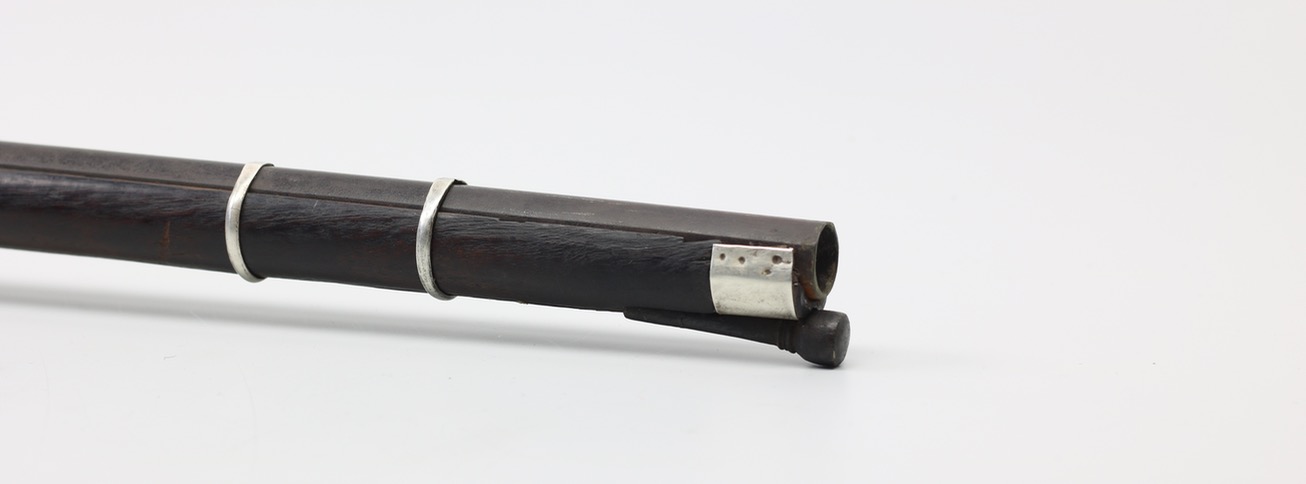
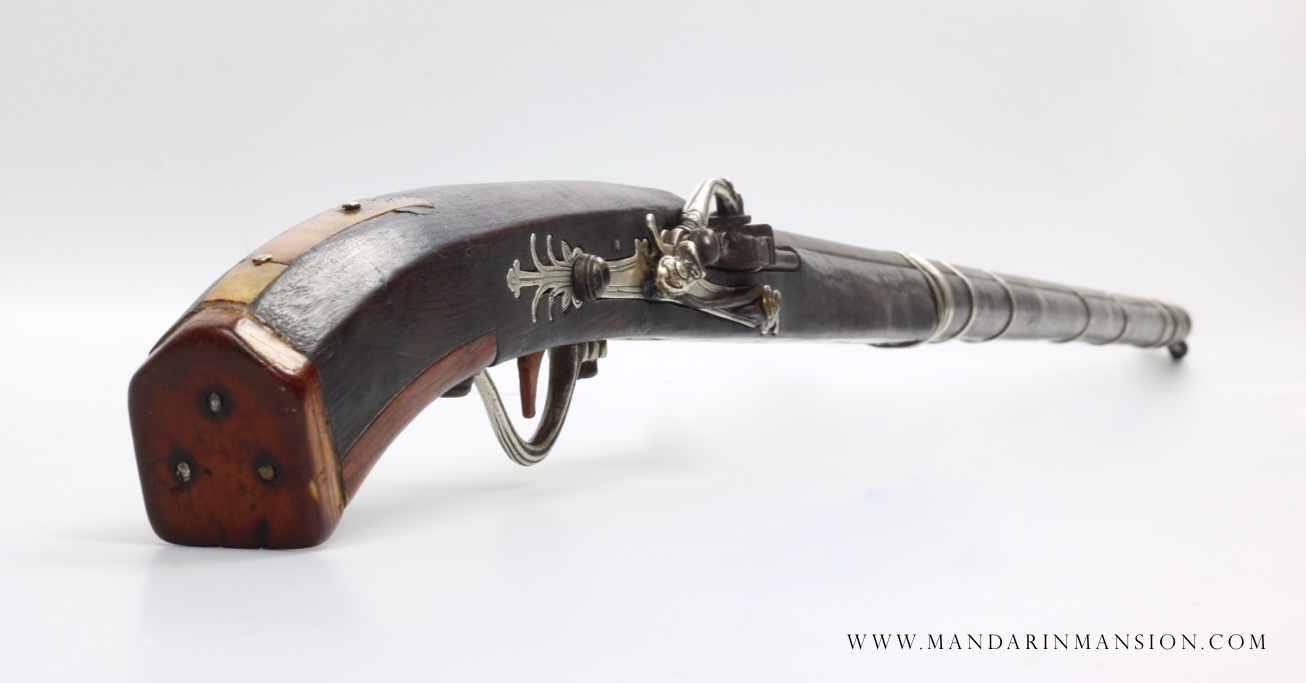
With a very fine Nepalese blade, but kard-like hilt and scabbard.
Early type with very shallow notch in the blade and little flare in the pommel.





